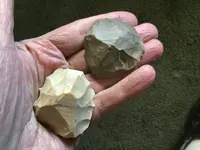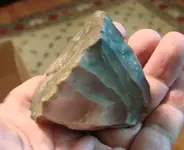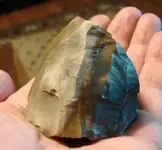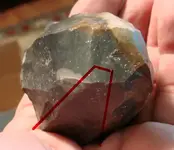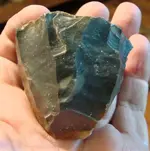Garscale
Bronze Member
- Joined
- May 4, 2020
- Messages
- 1,346
- Reaction score
- 3,622
- Golden Thread
- 0
- Location
- East texas
- Primary Interest:
- All Treasure Hunting
I see this question posted over and over. Mostly by new artifact hunters but also seasoned hunters. When I walk a site, I look at every stone with the question in mind of why it's there and signs of how it may have been used. After all, there is a good chance some native brought it there. That said, it's important to understand that virtually all intentionally made tools are obviously altered for the purpose.
A while back, I sat and watched a modern knapper work. All around him , the ground was covered with rocks. Immediately I could see a paleo blade, a nice core, a flint celt or hoe, a dozen choppers, etc. The truth was all of that was just scatter created by his reduction of cobbles to create biface. The exact same is true of native sites. The vast majority of items there are just scatter from a culture who's very existence leaned on lithic reduction. So did an indian put it there? Yep but whether it was a cooking stone, a one use flake , or the rock Pocahontas threw at a rabbit... we cant know.
In our desire to find artifacts, sometimes it's easy to make something special out of nothing. My point of this thread is to help people realize that the vast majority of items found on a site are just indicators of a site and not intentional tools. The next time out maybe consider that it's just waste scatter and recognize finish work. It will make collecting more fun.
A while back, I sat and watched a modern knapper work. All around him , the ground was covered with rocks. Immediately I could see a paleo blade, a nice core, a flint celt or hoe, a dozen choppers, etc. The truth was all of that was just scatter created by his reduction of cobbles to create biface. The exact same is true of native sites. The vast majority of items there are just scatter from a culture who's very existence leaned on lithic reduction. So did an indian put it there? Yep but whether it was a cooking stone, a one use flake , or the rock Pocahontas threw at a rabbit... we cant know.
In our desire to find artifacts, sometimes it's easy to make something special out of nothing. My point of this thread is to help people realize that the vast majority of items found on a site are just indicators of a site and not intentional tools. The next time out maybe consider that it's just waste scatter and recognize finish work. It will make collecting more fun.
Upvote
0

